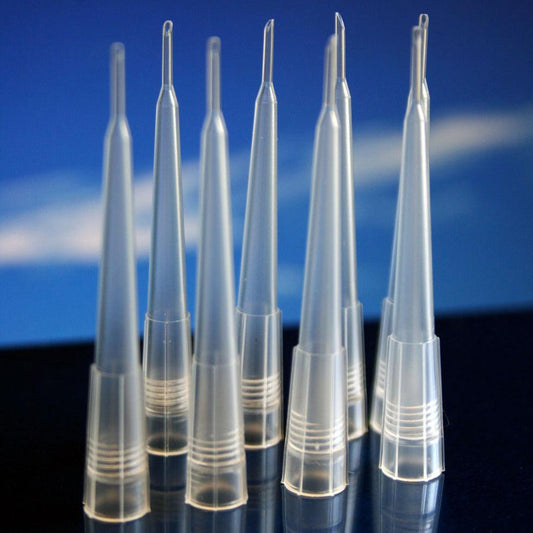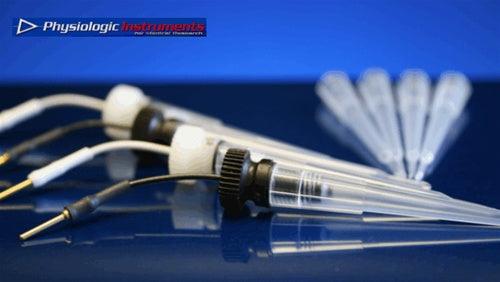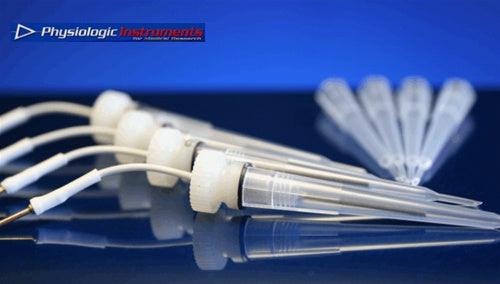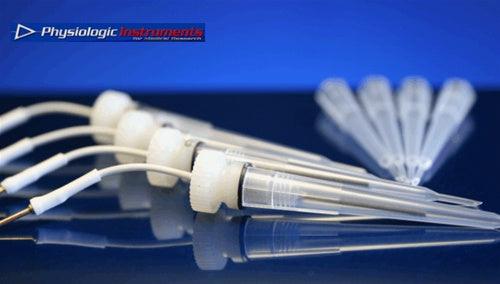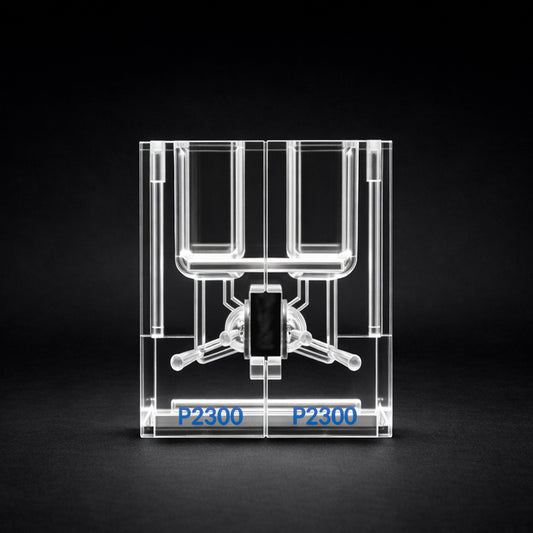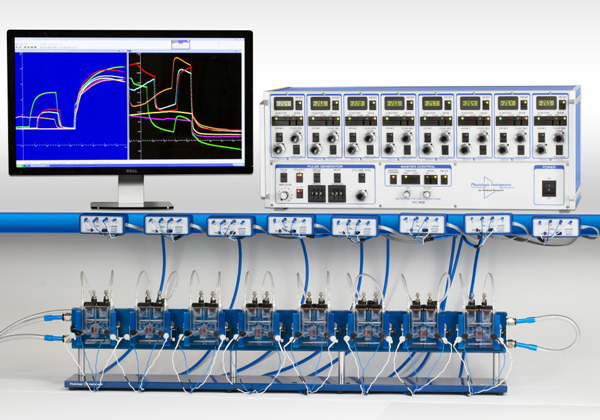Ussing chambers are essential tools in physiological and pharmacological research, allowing scientists to study ion transport, barrier function, and drug permeability across epithelial tissues. Whether you are investigating intestinal absorption, cystic fibrosis, or drug testing, a well-designed Ussing chamber system—such as the EasyMount Ussing Chamber System—can simplify your experiments, improve reproducibility, and optimize results.
In this article, we will break down how an Ussing chamber works from start to finish, including:
✅ How to obtain an intestinal tissue sample
✅ How to prepare a cell culture for Ussing chamber experiments
✅ Step-by-step setup procedures for the EasyMount system
✅ Data collection and analysis
✅ Proper cleaning and maintenance
1. What is an Ussing Chamber?
An Ussing chamber is a device that enables researchers to study transport mechanisms across epithelial tissues. It consists of two compartments, separated by an epithelial tissue sample or a cell culture monolayer. These compartments allow for the precise measurement of ion flux, transepithelial electrical resistance (TEER), and short-circuit current (I<sub>sc</sub>)—all crucial parameters for assessing barrier integrity and active transport.
The EasyMount Ussing Chamber System enhances this classic design by offering:
✔ Quick and user-friendly tissue mounting
✔ Integrated temperature and gas control
✔ High-throughput capabilities for multiple chambers
✔ Accurate and reproducible electrophysiological measurements
2. Obtaining and Preparing an Intestinal Tissue Sample
For researchers studying nutrient absorption, drug permeability, or disease models, obtaining a viable intestinal tissue sample is the first critical step.
Step-by-Step Process for Intestinal Tissue Collection:
-
Animal Selection:
- Typically, intestines are collected from rodents (rats/mice), pigs, or other models. Ensure ethical approval and follow institutional guidelines for animal use.
-
Tissue Dissection:
- Immediately after euthanasia, remove the small intestine.
- Place the excised tissue in ice-cold oxygenated Ringer’s solution to maintain viability.
-
Tissue Preparation:
- Cut the intestine open along its length.
- Gently remove excess mucus and connective tissue.
- Use a punch tool or scalpel to cut a circular or rectangular section suitable for the EasyMount chamber.
-
Mounting the Tissue in the EasyMount System:
- Secure the tissue between the chamber halves, ensuring a leak-proof seal.
- Fill both compartments with oxygenated physiological buffer.
- Start temperature and gas regulation to maintain physiological conditions.
3. Preparing Cell Cultures for Ussing Chamber Experiments
If you're using cell cultures instead of tissue samples, follow these steps:
Step-by-Step Process for Cell Culture Preparation:
-
Cell Selection:
- Use epithelial cell lines such as Caco-2 (intestinal), Calu-3 (lung), or MDCK (kidney), which form tight monolayers.
-
Seeding and Growth:
- Grow cells on semipermeable inserts (e.g., Transwell plates).
- Allow cells to differentiate for 14-21 days, ensuring proper polarization and tight junction formation.
-
Transfer to the EasyMount Chamber:
- Carefully place the cell culture insert into the chamber.
- Add buffer solutions to both apical and basolateral compartments.
- Start experimental procedures.
4. Setting Up the EasyMount Ussing Chamber System
The EasyMount Ussing Chamber is designed for fast and efficient setup, making it ideal for high-throughput studies.
Step-by-Step Setup Process:
-
Prepare the Chamber:
- Ensure all components are clean and assembled properly.
- Turn on temperature control and gas flow (95% O₂/5% CO₂ for physiological conditions).
-
Insert the Tissue or Cell Culture:
- Secure the tissue sample or cell culture insert between the chamber halves.
- Check for proper sealing to prevent leaks.
-
Add Buffer Solutions:
- Fill both the apical and basolateral compartments with oxygenated Ringer’s solution.
- Maintain constant stirring using built-in magnetic stirrers.
-
Insert Electrodes:
- Place voltage-sensing and current-passing electrodes into the chamber.
- Calibrate electrodes to ensure accurate electrophysiological readings.
-
Begin Data Collection:
- Measure baseline TEER and short-circuit current (I<sub>sc</sub>) to confirm tissue viability.
- Introduce test compounds, drugs, or ions to observe transport dynamics.
5. Cleaning and Maintenance of the EasyMount System
Proper cleaning is essential to maintain data integrity and prolong the system's lifespan.
Step-by-Step Cleaning Protocol:
-
Remove Tissue or Cell Culture Inserts:
- Dispose of used tissue properly.
- Rinse chamber components with deionized water.
-
Disinfect the Chamber:
- Soak in a non-corrosive disinfectant (e.g., 70% ethanol or hydrogen peroxide solution).
- Avoid using harsh chemicals that could damage electrodes.
-
Flush Electrodes and Tubing:
- Rinse electrodes thoroughly with distilled water to prevent salt buildup.
- Store electrodes in an appropriate electrode storage solution.
-
Dry and Store Properly:
- Allow components to air dry completely before reassembly.
- Store the system in a dust-free environment to prevent contamination.
Conclusion
The EasyMount Ussing Chamber System is an advanced tool for studying epithelial transport and barrier function with unparalleled ease and efficiency. Whether using intestinal tissue samples or cultured epithelial monolayers, the EasyMount system streamlines setup, ensures accurate measurements, and simplifies post-experiment cleaning.
By following the steps outlined in this guide, researchers can maximize data quality, improve reproducibility, and optimize experimental efficiency.
Ready to elevate your research? Explore how the EasyMount Ussing Chamber System can revolutionize your lab’s epithelial transport studies today!

